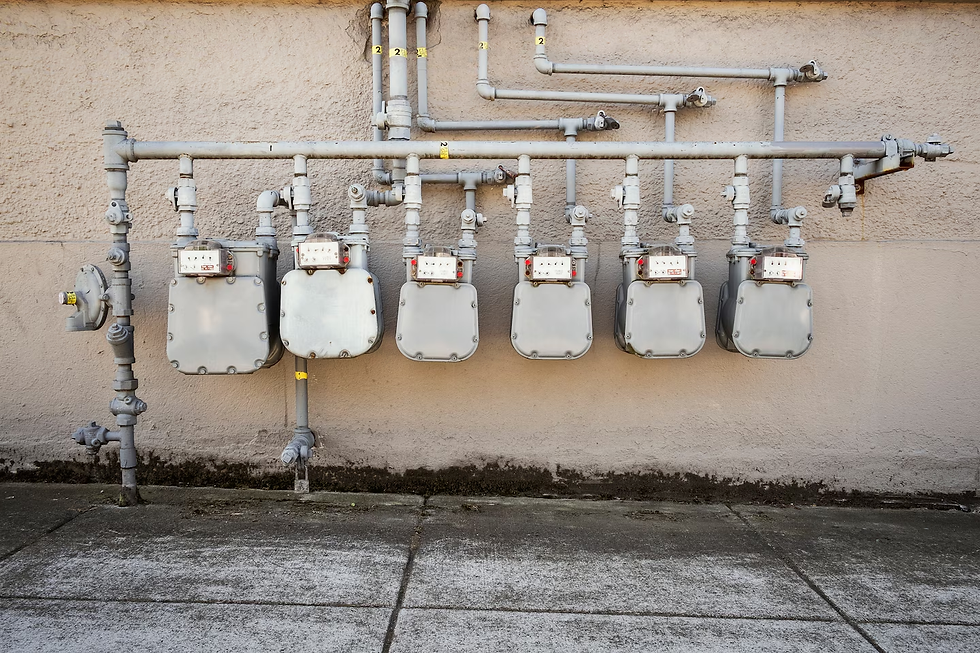Washington Gas customers in Virginia to see a surcharge this summer
- Think Big
- Jul 25
- 4 min read
The utility company will add a surcharge from August to October to make up for lost revenue.

Residents in Northern Virginia will see higher gas bills starting next month because of a temporary surcharge from its main utility provider, the Washington Gas Light Co.
The surcharge will affect 556,000 customers in much of Northern Virginia from August to October, and the average residential customer in Virginia may pay roughly $10 more per month on their gas bill. The surcharges are not capped and will be based on each customer’s natural gas use.
Washington Gas says that the surcharge is meant to cover lost revenue from last winter, when residents used less gas to heat their homes than the company expected.
How much is the surcharge and how does it work?
The surcharges are the product of a mechanism called Weather Normalization Adjustment (WNA), which enables utilities such as Washington Gas to reach their revenue requirements when a warmer heating season between October and May reduces demand for natural gas. If colder weather drives revenue above the utility’s target, the company returns money to its customers in credit.
Many utilities use some form of weather adjustment, including elsewhere in Virginia and in nearby states such as Pennsylvania.
Between October 2024 and May 2025, Washington Gas collected $19 million less than its revenue requirement and is using the surcharge to recover that lost revenue. The company experienced an even larger shortfall last winter after unusually warm temperatures.
How do the revenue requirements work?
Revenue requirements are set in negotiations between the utility and the state and are meant to ensure the company earns enough to cover its expenses and earn an agreed-upon profit margin. Without predictable revenue, utility companies could struggle to pay debts and maintain infrastructure during years with lower demand for natural gas.
“It’s the money that the commission said we need to run our business,” said Jessica Rogers, vice president of regulatory and climate strategy at Washington Gas.
The company has applied WNA to its Virginia customers’ bills since 2007. It brings its adjustment calculations to Virginia’s State Corporations Commission (SCC) at the beginning of July for review.
WNA is “designed to be neutral,” Rogers said, because the mechanism both guarantees and constrains the company’s revenue.
When building a revenue plan, utilities and regulators such as Virginia’s SCC rely on a formula built with historical data on operating expenses, the volume of natural gas delivered to customers, and the average temperatures in the fall, winter and spring, among other variables.
In the case of Washington Gas’s operations in Virginia, those averages are calculated using weather data spanning more than 100 years. But older data can muddy calculations of a “normal” winter. Many states that allow utilities to use WNA mechanisms often consider only the most recent 15 to 30 years of weather data, Rogers said.
“Because the weather baked into Virginia rates is so far from actual temperatures over the last 10 years,” she said, “it’s really making this look like a more one-sided mechanism than it is designed to be.”
Will Washington Gas customers in Maryland or D.C. see surcharges on their bills?
Washington Gas doesn’t apply WNA to its Maryland customers’ bills, but the state’s utility regulator, the Maryland’s Public Service Commission, allows the company to use other “revenue normalization” mechanisms. Differences between the two models mean Maryland customers will not see surcharges on their bills in August, September and October.
Washington Gas has proposed introducing WNA to its billing practices in D.C., and that rate case is currently before the District’s Public Service Commission. The company’s D.C. proposal would measure average temperatures using five years of weather data.
D.C.’s Office of the People’s Counsel, an independent agency that advocates on behalf of residential utilities customers, has opposed Washington Gas’s request. The office argues that the mechanism shields the company from risk at the ratepayer’s expense. The OPC also contends that five years is too short a span to measure the effect of shifting temperatures on natural gas consumption, lobbying instead for an agreement to use at least 10 years of data if the District does allow Washington Gas to move forward with WNA.
Should customers in Virginia expect to see the same surcharges next year?
It’s possible and, going by recent temperatures, likely. With average winter temperatures creeping upward, Washington Gas’s customers in Northern Virginia have seen more surcharges than credits on their bills in recent years.
In an ideal world, utilities and regulators would apply a “higher level of precision” when building revenue targets around weather predictions, said Bill Eger, founder of the consulting firm ETHOS Sustainability and the former energy manager for the city of Alexandria.
“You don’t want to have to use this makeup mechanism,” Eger said. But building a nimble model more capable of keeping pace with a warming climate is expensive and must go through a lengthy approval process.




Comments